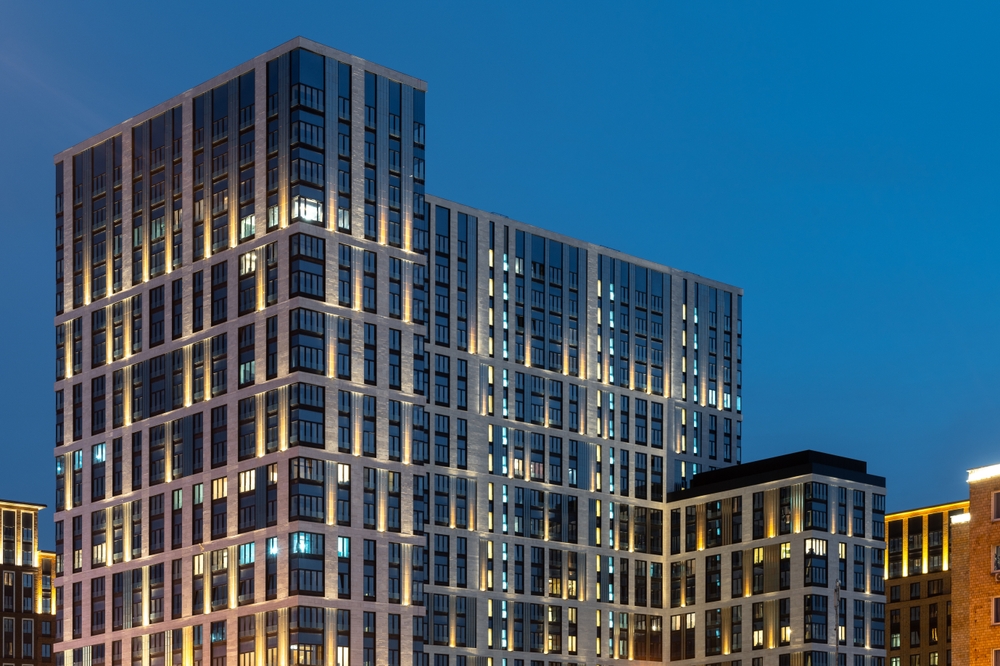Introduction to Facade Design
The design and architecture of facades play a crucial role in defining the aesthetic and functional characteristics of buildings. Facades serve as the interface between the interior and exterior environments, influencing not only the visual appeal but also the energy efficiency and environmental performance of a structure. Historically, facades have evolved significantly, adapting to technological advancements and changing architectural trends.
Historical Facades
Historical facades are rich in architectural details that reflect the cultural and technological context of their times. Iconic examples, such as the Gothic cathedrals of Europe and the Art Deco buildings of the early 20th century, demonstrate the diverse approaches to facade design across different eras. These facades often feature intricate ornamentation and robust materials that have withstood the test of time.
Modern Architectural Trends
In contemporary architecture, there is a noticeable shift towards minimalism and the use of clean lines. Modern facades often incorporate advanced materials and technologies, such as smart glass and adaptive facades, which enhance both the aesthetics and functionality of buildings. The integration of technology allows for dynamic facades that can respond to environmental conditions, improving energy efficiency and occupant comfort.
Sustainable Facade Design
Sustainable architecture emphasizes the use of environmentally friendly materials and design strategies that minimize the ecological footprint of buildings. Sustainable facades are designed to optimize natural light, reduce energy consumption, and improve indoor air quality. Examples include the use of green facades, which incorporate vegetation to provide insulation and absorb carbon dioxide, and ventilated facades, which facilitate natural ventilation and reduce cooling loads.
Energy-efficient Facades
Energy-efficient facades are essential for reducing the overall energy consumption of buildings. These facades are designed to minimize heat loss in winter and reduce heat gain in summer, thereby lowering the reliance on artificial heating and cooling systems. Double-skin facades, which consist of two layers of glass separated by an air cavity, are a prime example of energy-efficient design. They provide excellent thermal insulation while allowing for natural light and views.
Facade Engineering
The engineering of facades involves careful consideration of structural integrity, material properties, and environmental factors. Modern facade engineering often employs lightweight, high-performance materials such as aluminum, glass, and composites. The choice of materials impacts not only the structural performance but also the aesthetic qualities and maintenance requirements of the facade.
Building Envelopes
The building envelope, which includes the facade, roof, and foundation, is critical for controlling the exchange of energy and moisture between the interior and exterior of a building. Effective building envelopes are designed to be airtight, well-insulated, and durable. Various types of building envelopes, such as curtain walls and cladding systems, offer different advantages in terms of performance and aesthetics.
Facade Systems
There are several facade systems used in modern architecture, each with unique characteristics and benefits. These include:
- Curtain Wall Systems: Lightweight, non-load-bearing walls that hang from the building’s structure.
- Cladding Systems: Protective layers attached to the exterior of a building to provide insulation and weather resistance.
- Ventilated Facades: Systems that allow for natural ventilation within the wall cavity, improving thermal performance.
Glass Facades
Glass facades are popular for their sleek, modern appearance and ability to provide natural light. However, they present challenges such as thermal performance and glare control. Advances in smart glass technologies, such as electrochromic glass that changes transparency with electrical signals, offer solutions to these challenges, enhancing both the aesthetic and functional qualities of glass facades.
Curtain Walls
Curtain walls are a type of facade system that is widely used in high-rise buildings. They are typically made of lightweight materials such as aluminum and glass, and they do not carry any structural loads from the building. Curtain walls provide excellent weather resistance and can be designed to incorporate various performance-enhancing features such as thermal breaks and shading devices.
Cladding Materials
The choice of cladding materials is crucial for the performance and appearance of a facade. Common cladding materials include metal, stone, brick, and composite panels. Each material offers different advantages in terms of durability, maintenance, and aesthetics. For example, metal cladding is lightweight and easy to install, while stone cladding provides a traditional, robust appearance.
Adaptive Facades
Adaptive facades, also known as responsive facades, can change their properties in response to environmental conditions. This can include adjusting shading devices, altering thermal properties, or changing transparency. Adaptive facades enhance building performance by optimizing energy use and improving occupant comfort. Examples include facades with dynamic shading systems that automatically adjust to sunlight levels.
Green Facades
Green facades incorporate vegetation as part of the building’s exterior. This can include green walls, vertical gardens, and rooftop gardens. The benefits of green facades include improved insulation, reduction of urban heat islands, and enhanced biodiversity. Green facades also contribute to the aesthetic value of buildings and provide psychological benefits for occupants.
Double-skin Facades
Double-skin facades consist of two layers of glass with an air cavity in between. This design provides excellent thermal insulation and can significantly reduce energy consumption for heating and cooling. The air cavity can be ventilated or non-ventilated, depending on the design requirements. Double-skin facades are particularly effective in harsh climates, providing a buffer against extreme temperatures.
Smart Facades
Smart facades incorporate advanced technologies to enhance building performance. This can include the use of photovoltaic panels to generate electricity, sensors to monitor environmental conditions, and actuators to adjust facade elements in real-time. Smart facades contribute to sustainable building practices by reducing energy consumption and improving indoor environmental quality.
Facade Performance
Measuring the performance of facades involves assessing various factors such as thermal insulation, acoustic insulation, weather resistance, and durability. Performance analysis tools and software are used to simulate different conditions and optimize facade design. Ensuring high performance in facades is crucial for the overall efficiency and comfort of buildings.
Facade Technologies
Innovations in facade technology continue to transform the field of architecture. New materials, such as aerogels and phase-change materials, offer improved thermal properties. Advances in manufacturing techniques, such as 3D printing, enable the creation of complex and customized facade elements. These technologies enhance the capabilities of architects and engineers to design high-performance facades.
Facade Design Software
There are several software tools available for facade design, each offering different features to assist architects and engineers. Popular software includes Revit, Rhino, and Grasshopper, which provide capabilities for 3D modeling, performance simulation, and parametric design. Using the right software can streamline the design process and improve the accuracy of facade designs.
Challenges in Facade Design
Designing facades presents various challenges, including balancing aesthetics and performance, adhering to building codes, and managing costs. Common issues include thermal bridging, water infiltration, and material durability. Addressing these challenges requires a multidisciplinary approach, involving collaboration between architects, engineers, and material scientists.
Role of Facades in Urban Design
Facades play a significant role in urban design, influencing the character and identity of cities. They contribute to the visual coherence of streetscapes and public spaces. Thoughtful facade design can enhance the pedestrian experience, improve environmental conditions, and support the cultural and historical context of urban areas.
Historical Preservation and Facades
Preserving historical facades while accommodating modern needs is a complex task. It requires a careful balance between maintaining the architectural integrity of historical buildings and integrating contemporary functions. Successful examples include the restoration of heritage buildings with modern additions that respect the original design while providing new amenities.
Environmental Impact of Facades
The environmental impact of facades extends beyond energy consumption to include factors such as material sourcing, manufacturing processes, and end-of-life disposal. Sustainable facade design aims to minimize these impacts through the use of eco-friendly materials, efficient manufacturing techniques, and strategies for reuse and recycling.
Benefits of Sustainable Facades
Sustainable facades offer numerous benefits, including reduced energy costs, improved indoor air quality, and enhanced occupant comfort. They also contribute to broader environmental goals, such as reducing greenhouse gas emissions and promoting biodiversity. Investing in sustainable facades can provide long-term economic and environmental returns for building owners.
Future Trends in Facade Design
The future of facade design is likely to be shaped by advancements in technology and increasing emphasis on sustainability. Emerging trends include the use of biomimicry to design facades that mimic natural processes, the integration of renewable energy systems such as solar panels, and the development of interactive facades that engage with occupants and the environment. These trends promise to further enhance the performance and aesthetic qualities of building facades.
By focusing on these key aspects, the design and architecture of facades can continue to evolve, meeting the needs of modern buildings while preserving the cultural and environmental heritage of our urban landscapes.


Leave a Reply